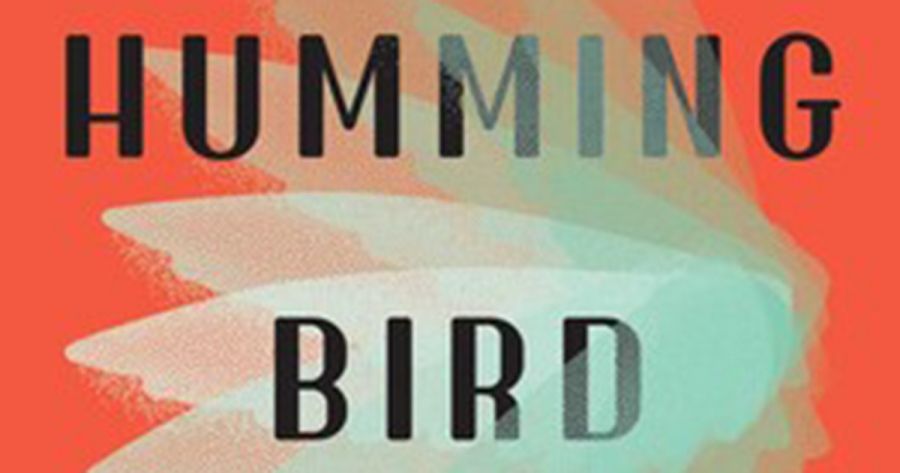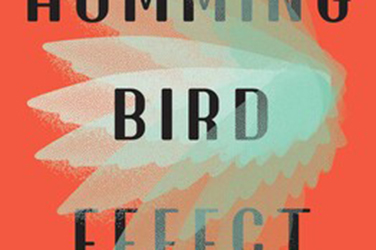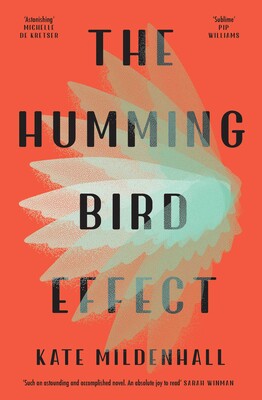
- Free Article: No
- Contents Category: Fiction
- Review Article: Yes
- Article Title: Beginning again
- Article Subtitle: Kate Mildenhall’s powerful third novel
- Online Only: No
- Custom Highlight Text:
Spellbinding, genre-defying, and powerful in its vision of the future, Kate Mildenhall’s third novel, The Hummingbird Effect, interweaves four matrilineal narratives that span the years 1933 to 2181. Set in Footscray and its surrounds, including the Meatworks, Sanctuary Gardens Aged Care, and a futuristic Forest/Inlet/Island, the novel explores the central concern of ‘unmaking the world’ in order to ‘begin again’.
- Featured Image (400px * 250px):

- Alt Tag (Featured Image): Cassandra Atherton reviews 'The Hummingbird Effect' by Kate Mildenhall
- Book 1 Title: The Hummingbird Effect
- Book 1 Biblio: Scribner, $32.99pb, 320 pp
- Book 1 Cover Small (400 x 600):

- Book 1 Cover (800 x 1200):

Named after the hummingbird effect, this novel explores ways of understanding how a small innovation may trigger transformation in a future unrelated field. A common historical example is the way the invention of the printing press created a demand for reading glasses, which in turn led to the microscope and the ability to understand the human body as a composition of microscopic cells. In Mildenhall’s novel, Hummingbird is also an AI language model that is asked to ‘list human innovations you would uninvent to make a better world’. While Hummingbird’s items range from nuclear weapons to literacy, the internet, gunpowder, coffee pods, and corn syrup, ultimately it argues, ‘the decision to uninvent any of these innovations is not straightforward, and the complex interplay of different factors must be considered’. In a witty moment, when the AI language model is asked, ‘Can you write me a poem to save the world?’ It turns out to be ‘[t]ruly awful. [The] World has moved past rhyming couplets’ – a topical issue given that ChatGPT remains unable to write convincing contemporary poetry.
The first of the four entwined narratives is a vibrant piece of historical fiction set at the Angliss Meatworks in 1933. Primarily focusing on Peggy, and slaughterman Jack King, Mildenhall problematises their desire by setting it against the abject kill room. The descriptions of killing and skinning animals captures the slaughtermen’s skill amid the horror of killing:
One cut now from throat to arse and then hook between the shins, and peel her down. When it’s done well, it’s a thing to behold, the gentle sucking sound of the skin tearing away leaving behind a layer of white-yellow fat. Off in one, toss the pelt on the belt and off to the fellmongery, and he’s satisfied that it’s a good one, clean and full.
However, with the invention of new machinery, Mildenhall demonstrates in a brutal series of events how the slaughtermen’s livelihood is threatened by a ‘chain’ that ‘runs past … one cut each – until it’s all in pieces at the other end’.
In the second narrative, Mildenhall’s depiction of an erudite older woman in aged care is gut-wrenching. Set in 2022, Hilda is locked in, isolated, and neglected by her carers. She begins to believe that showers are washing away her memories and slowly descends into delirium. Internal monologues map Hilda’s unravelling, despite occasionally enlightened and chastening moments: ‘Why lockdown why medicine why mask why not why not more why are you why aren’t you why was this not sooner anticipated announced predicted what about us about the virus about the economy about the environment.’ Hilda is multifaceted and the depiction of her circumstances complex, but the use of text messages and report templates occasionally detracts from the brilliance of Hilda’s characterisation.
The final two narratives are futuristic. La and Cat are the protagonists of the third narrative set eight years into the future, while Maz and Onyx are characters in 2181. In these stories, Mildenhall depicts a world at the mercy of its ‘WANTS’. This includes an Atwoodian IVF subplot where La feels like ‘some kind of egg machine’ and Maz and Onyx’s role to collect the enigmatic ‘oddz’ because, ‘If the pieces are brought together they combine to become a powerful machine, or a source … to begin everything again.’ It is the sensuality and commitment between La and Cat, and the familial endurance of Maz and Onyx, that drive these narratives. They also provide stirring echoes of the past, such as Cat’s reflection on Angliss Meatworks:
you know they used to bring the cattle across this bridge from the markets to the abattoir. Made them walk themselves to their slaughter … the river carries sounds, they would have spent the night there in the markets hearing the cows or sheep from the day before screaming before they were killed.
The satisfaction the reader feels when they unearth and identify the connections across Mildenhall’s four narratives is a testament to her careful planning and commitment to humanising the hummingbird effect. Her female characters are connected across time and place, illustrated in threshold moments of birth and death. Mildenhall’s evocation of women carrying one another (literally and figuratively) is an exquisite theme, reiterated in various ways throughout the novel. Indeed, as La recounts, when ‘your grandmother was carrying your mother in her womb then you were a tiny egg in your mother’s ovaries’ is mirrored in Hilda’s words, ‘bogong moths are a multivoltine species, breeding often over one season so that there are three generations alive at the same time’. Mildenhall’s The Hummingbird Effect is a devastating novel that exposes the ways the future is seeded in the past.


Comments powered by CComment